During the week of the midterm elections in the USA, we spent several days visiting schools in New York City for an RSA research project, Schools Without Walls.
Whilst the project is explicitly focused on schools that have exceptional relationships with their communities and the world beyond the school gates, I was struck by how persistently issues of inequality in American society were raised by students and staff.
It didn’t seem to matter which age range the school served, how the school was funded, or in which part of New York the school was located; common to all four schools was an air of resistance against social injustice. Furthermore, the school leaders and teachers seemed to share a common response to this widespread concern: empowering and amplifying students’ voices on the issues they cared about.
Fannie Lou Hamer Freedom High School (or simply ‘Fannie Lou’) is a public high school that serves an underprivileged, predominantly Hispanic community in the Bronx. Taking after its namesake, Fannie Lou Hamer (an American civil rights activist), the school has a strong commitment to social activism. This plays out in numerous ways, not least their dynamic student government which recently managed to effect change at policy level.
For Advocacy Day 2018, eight representatives from the student government travelled to Albany to lobby for the restoration of funds for after-school activity at Fannie Lou. Testament to their campaigning skills was the outcome that they managed not only to restore the original $1.5 million, but they increased funding to $2.5 million!
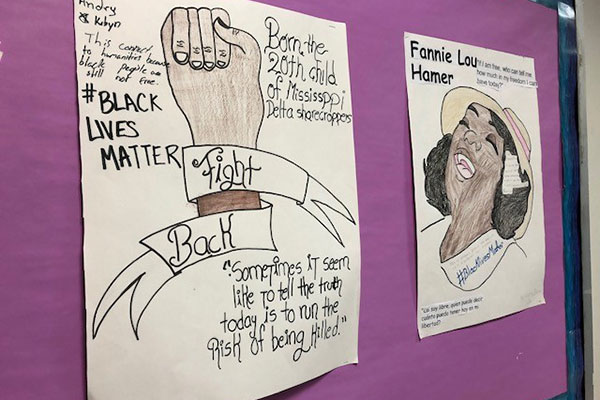
At PS/MS 188 The Island School, middle school students use the in-house social action makerspace to get their voices heard. Located in a deprived area in the Lower East Side of Manhattan, 50% of the students live in the nearby housing shelter, and 99% are eligible for free or reduced lunch. Experience of poverty, parental drug abuse, domestic abuse and racism is not uncommon.
These students have a lot to say about social injustice, both from lived experience and an awareness of the current political environment. The social action makerspace offers them a platform from which to express their views. Using donated equipment, students record videos and podcasts, paint murals, create dioramas, write stories and so on, to channel their personal experiences and to question why current solutions to social challenges aren’t good enough. I encourage you to seek out their website and social media presence.
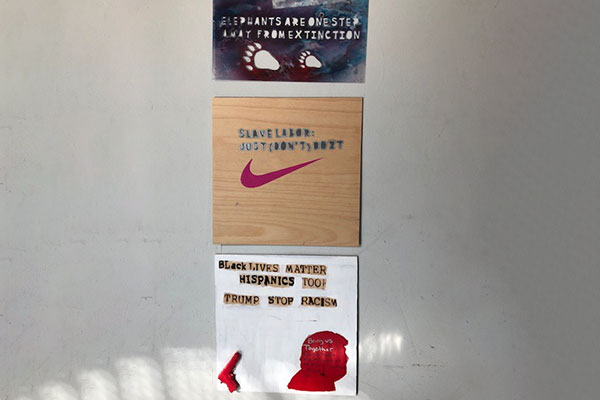
At Blue School in Seaport, Manhattan (near the Financial District), children are encouraged to find their voice from the tender age of two years old. Whilst Blue School serves a more affluent community than PS188 and Fannie Lou, it would be a mistake to think that Blue School students rest on their laurels. From day one, children are taught to question, to research, to reflect, and to give feedback to each other. Dialogue is key.
This approach is what equipped 1st graders (aged 6) with the skills and confidence to protect their local playground from cigarette butts. These six-year-old activists managed to convince the park keeper, the council, and the management of a nearby building (whose employees were often the source of the cigarettes) to agree to ban cigarettes within 25 feet of the park. This victory not only had a profound impact on these young children to realise the power of their voice, but it led to a fully-fledged research project visiting numerous local parks and playgrounds to compare provision and upkeep and to campaign for change where needed!
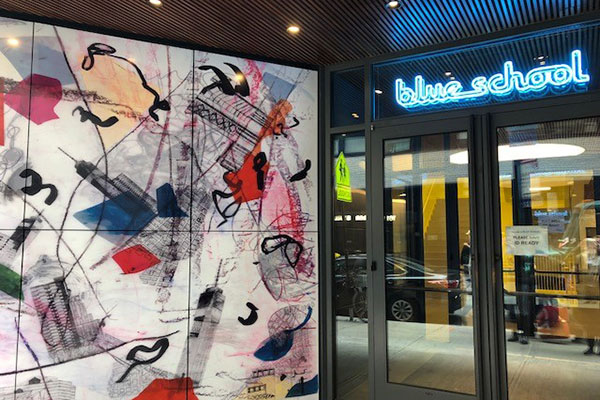
My final example is a bit different. It pertains to another setting in which students are using their voice: that of the workplace. At Cristo Rey High School in East Harlem, high school students spend one day every week in a work placement at a bank, law firm, tech company, fashion company… (the list goes on) across New York City.
The so-called Corporate Work Study Program is more than just a token week of work experience; it is four years of part-time employment – the salaries from which contribute to scholarships for the students. The benefits for Cristo Rey students are manifold: unprecedented access to myriad corporate professions, experience of high-profile workplace settings, opportunities to interact with adults beyond just teachers… It’s an incredible combination of reducing inequality by increasing access, giving students real-world experience, and building their social capital so that students blossom into confident adults.
The students I met who all shook my hand and maintained eye contact with a level of assurance I’m not sure I yet possess, were testament to that.
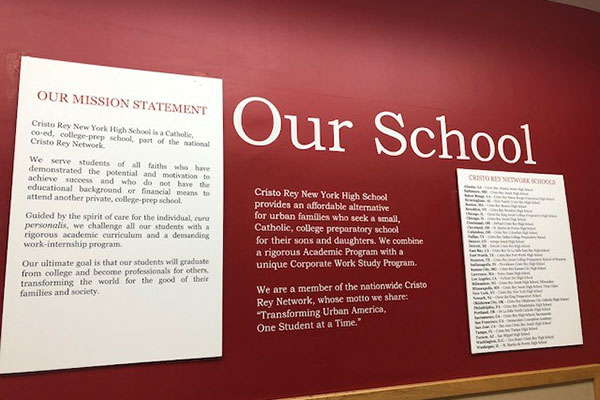
Our experience of these four schools was nothing short of inspiring; my brief descriptions here are merely sketches of the impressive work in progress all over New York City and further afield. Nevertheless, I hope they further inspire you to use your voice to tackle an issue that you really care about…
Many thanks to ECIS for their support for this project.
Stay tuned for more blogs about our school visits and for the Schools Without Walls final report detailing all of our case studies from across the globe - due to be published in Spring 2019.
Feel free to leave a comment below.
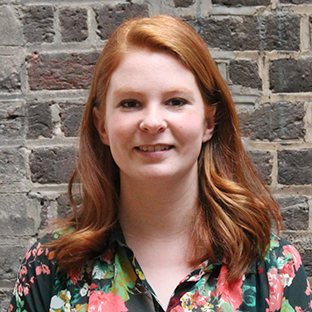
Be the first to write a comment
Comments
Please login to post a comment or reply
Don't have an account? Click here to register.